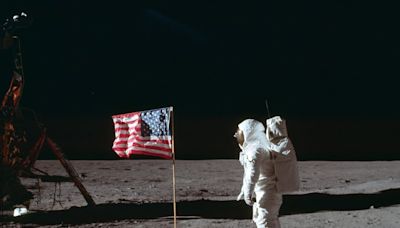Search results
In geophysical terms the Moon is a planetary-mass object or satellite planet.
Earth's Moon is the brightest and largest object in our night sky. The Moon makes Earth a more livable planet by moderating our home planet's wobble on its axis, leading to a relatively stable climate. It also causes tides, creating a rhythm that has guided humans for thousands of years.
Jun 27, 2024 · Moon, Earth’s sole natural satellite and nearest celestial body. Known since prehistoric times, it is the brightest object in the sky after the Sun. Its name in English, like that of Earth, is of Germanic and Old English derivation.
The Moon is Earth's only natural satellite. It goes around the Earth at a distance of about 239,000 miles (385,000 kilometers). The Earth and Moon are tidally locked. Their rotations are so in sync we only see one side of the Moon. Humans didn't see the lunar far side until a Soviet spacecraft flew past in 1959.
The Moon was likely formed after a Mars-sized body collided with Earth several billion years ago. Earth's Moon is the only place beyond Earth where humans have set foot, so far. Earth's only natural satellite is simply called "the Moon" because people didn't know other moons existed until Galileo Galilei discovered four moons orbiting Jupiter ...
As you sail onward, you see our planet and its Moon locked together in their endless, circling, gravitational embrace. Your distant view gives you a unique perspective on the Moon that can be hard to visualize from the ground, where the Moon appears to sweep through the sky as an ever-changing globe of light.
The Moon is the fifth largest natural satellite in the Solar System. At 3,475 km in diameter, the Moon is much smaller than the major moons of Jupiter and Saturn. Earth is about 80 times the volume than the Moon, but both are about the same age.
Explore the moon's surface with Google Moon's interactive maps and detailed imagery.
Jul 3, 2019 · The moon, Earth’s sole natural satellite, is our constant companion. It has circled our planet for billions of years, since before the first sparks of life flickered in the oceans—before Earth...
Moon Galleries - NASA Science. Missions. Search All NASA Missions. A to Z List of Missions. Upcoming Launches and Landings. Spaceships and Rockets. Communicating with Missions. Artemis. James Webb Space Telescope.

